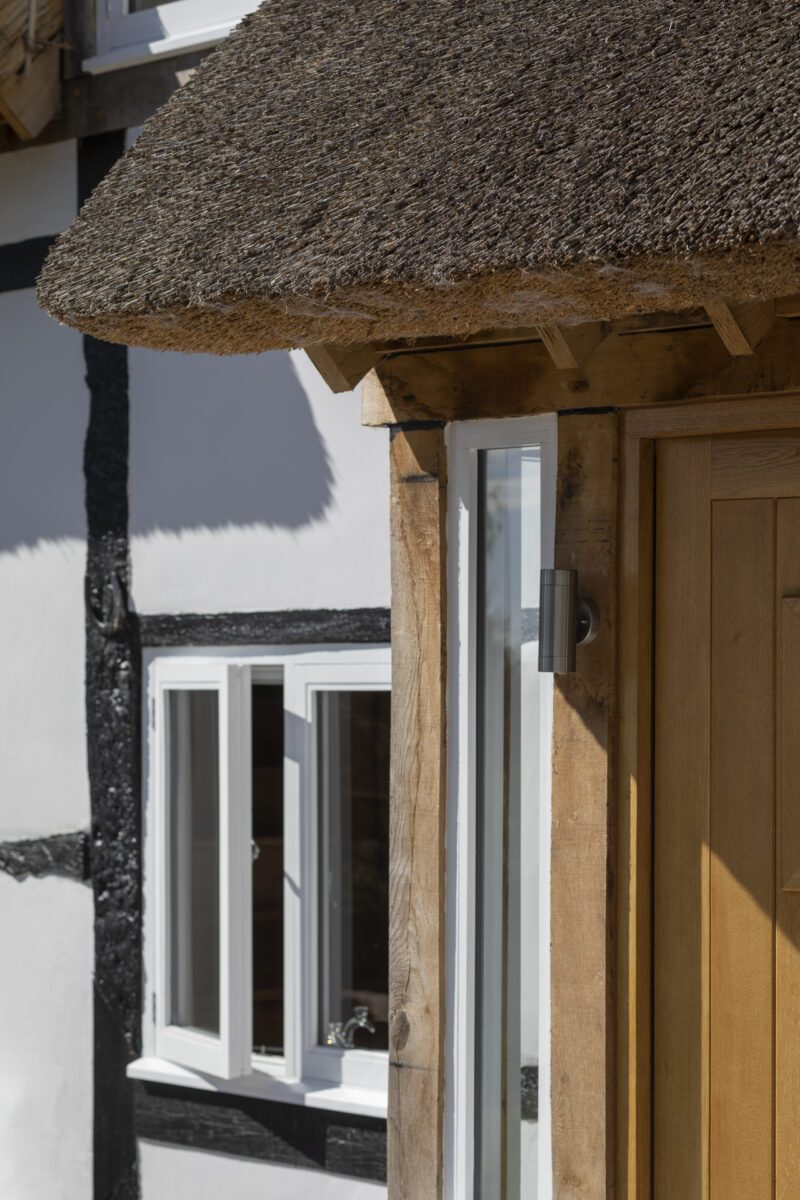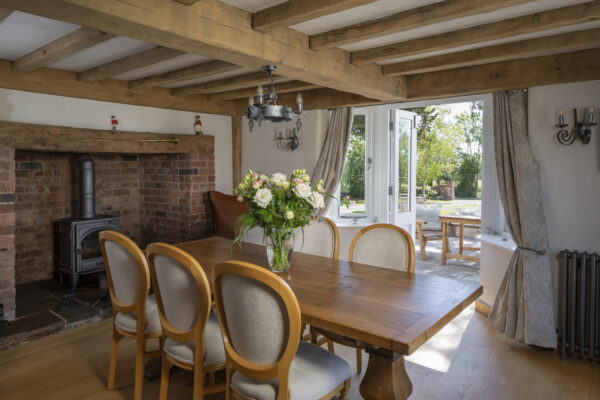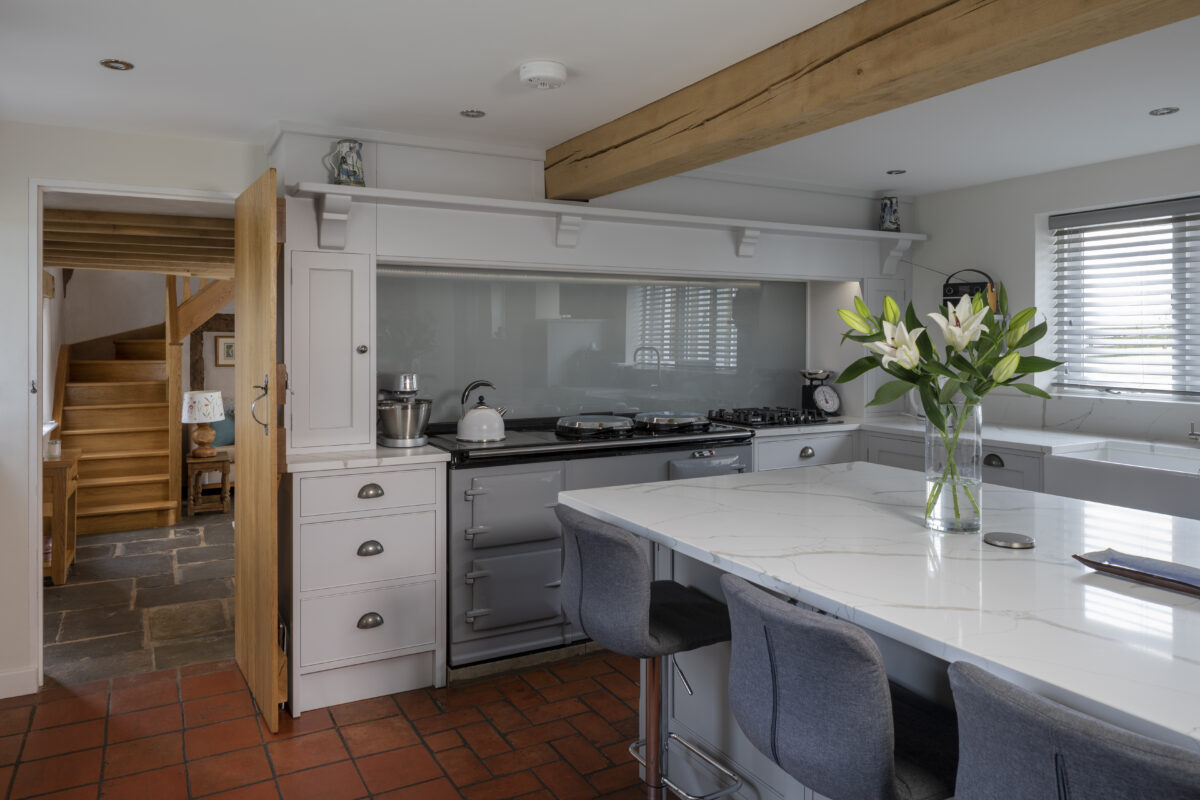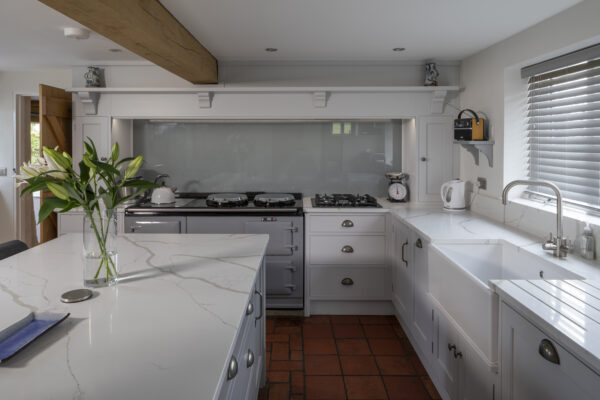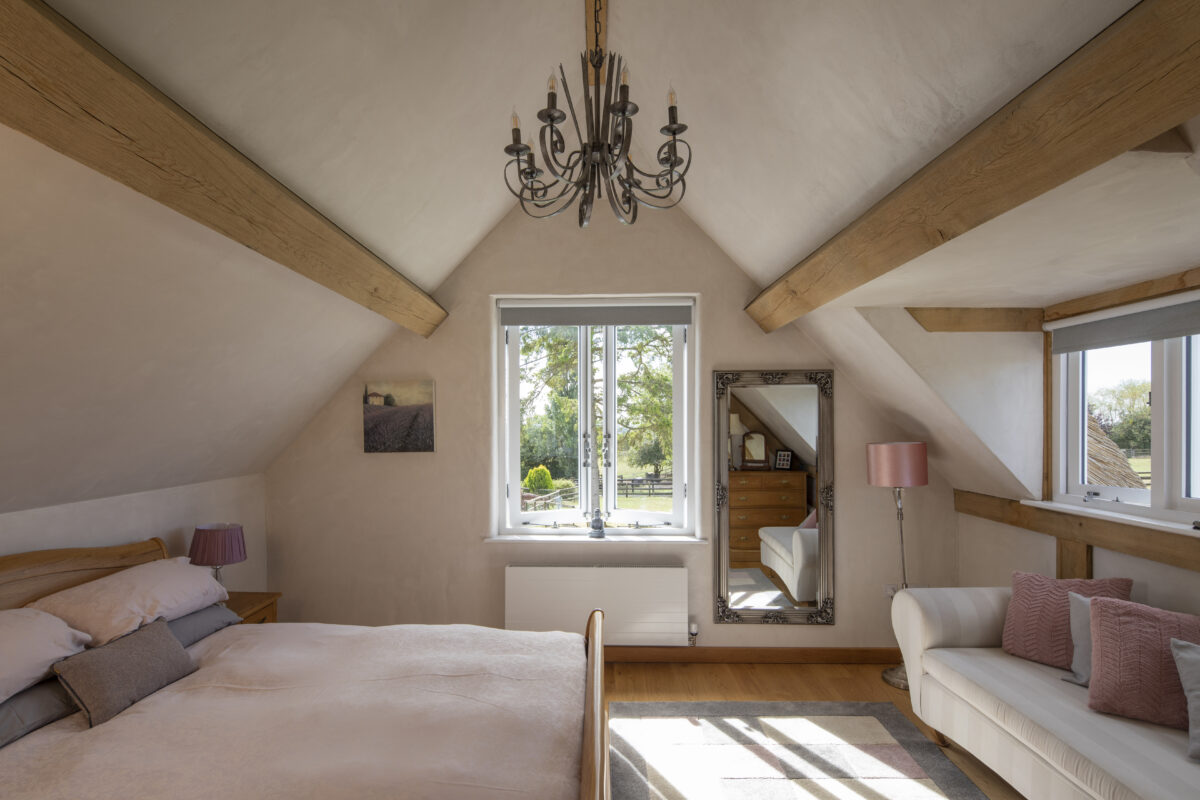
The Brief
This much-loved family home was a part-Medieval, part-Victorian thatched cottage in the heart of the Worcestershire countryside. Tragically, it had suffered considerable damage after a catastrophic fire. The downstairs of the property was severely damaged, the first floor was almost entirely lost and the roof had been completely destroyed.
“It was down below first floor level, and every day it rained, it fell a bit further into the ground. Every day I looked at it, it just got smaller and smaller. It was so derelict, the birds had moved in.”
In fact, the home was so badly damaged that our clients had considered selling it. However, the emotional ties that the family held for the cottage meant restoration felt the only viable option, despite the potential challenges.
The family sought our help to resurrect the cottage to restore its beauty and place in the landscape. At the same time, the tragedy allowed an opportunity to make sensitive and practical changes to the building’s fabric to ensure that when it was reborn it would be a place of warmth, comfort and historical integrity.
The Design Solution
Developing a design solution for this building involved many challenges.
When we see a building for the first time, we can generally see its character and layout so we know what we are working with. On this project, so much of the original building had been lost that we had to piece together the layout from what we had found on site as well as using old photographs taken in the house during family parties and celebrations.
The regulations were also unusually complex. As a listed building, we had to adhere to listed building philosophy. At the same time, since so much of it involved new construction, it also had to conform to all the requirements that relate to new buildings, most pertinently around energy efficiency.
Our design sought to preserve the architectural heritage of the building whilst at the same time ensuring that the finished building would be safe, secure and suitable for its next chapter.
Over the centuries, the Medieval part of the building had settled into its landscape. As a result, the roof on this part of the house sloped considerably. We took the important decision to level the proposed roof by adding an additional layer of new timber frame where it was required. This solution made it possible for a new roof to be formed using traditional carpentry methods and at the same time provide a little more head height, volume, light and space, especially in the principal bedroom. It put the building back to the way it would have been constructed originally and also expressed a clear evolution in its history.
Before the fire, the roof on both the Medieval and the Victorian parts of the building had been thatched. We took the opportunity to rework the roofline so the Medieval part was thatched, but the Victorian part was tiled in the way it would have been when it was first built.
Triangular windows that projected outwards, which had been added to the building more recently were reconsidered. We felt these detracted from the building, so we removed them to create a quieter, more historically accurate external aesthetic.
To bring more light into the building, we slightly increased the size of the existing windows so they became the full size of the timber frame that they sit within.
Internally, the layout remained much the same, although our clients did take the opportunity to make some subtle changes. The dining room had always felt dark and gloomy, and separated from the rest of the downstairs. To address this, we did not reinstate some of the infill in the timber frame between this room and the adjoining snug. This created a more open and welcoming space.
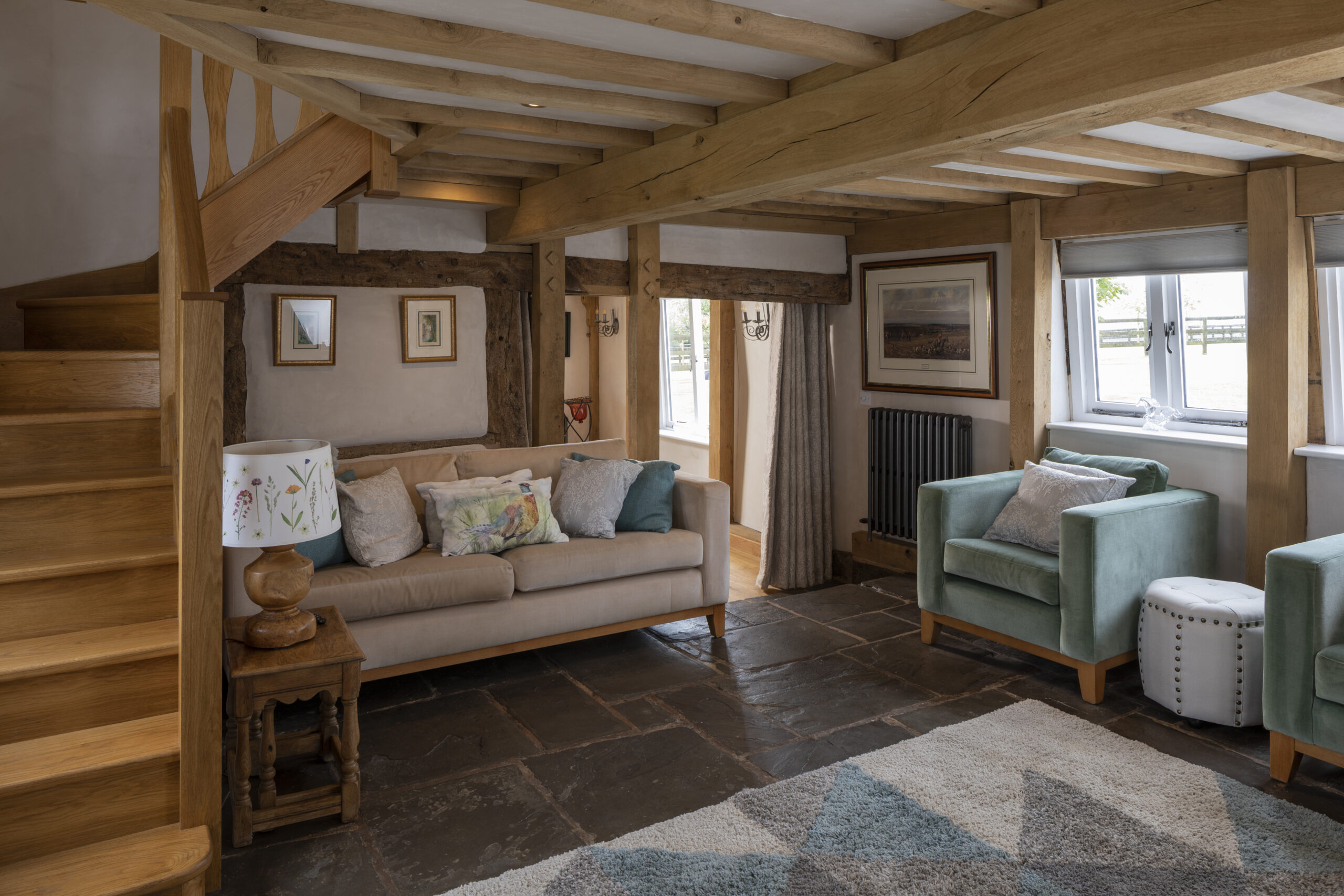
The Build Process
As a listed building, we secured listed building consent for the works. Due to the amount of damage caused, planning permission was also required. We worked with Worcestershire County Council’s Conservation Officer and Planning Department to ensure we developed a scheme that would achieve both sets of approvals.
“When the conservation officer from Worcestershire County Council came, he told me I had a good team on board and that there shouldn’t be any problems. He was right, there weren’t. We didn’t have any problems at all, and there were no delays.”
Then, in order to secure a firm price for the works, we issued the project for tender and then appointed a Building Contractor to lead the works on site.
Initial progress on site was painstaking as we worked with the contractor to carefully remove all the damaged parts of the building and ensured we took it back to a sound and secure structure.
When the rebuilding work started we used traditional materials throughout, including oak joinery, lime plaster and mineral-based paints. This ensured the building could breathe and would be much healthier than it had been previously.
We also took the opportunity to improve the energy performance of the home. Working with Historic England’s recommendations, we increased the amount of insulation in the building using wood fibre insulation board.
The new windows used a traditional timber design, in keeping with the building’s age, and these were double glazed to improve thermal efficiency.
The result is a much warmer, more practical home.
“Before, you could see the drafts coming through and your hair would blow in bed at night. On very windy nights you could actually feel the house move. But last winter it was much warmer, much easier to keep warm and just nice and bright. It felt really good.”
As work progressed on site, our clients asked for one further change to be made to the building’s design. In the dining room a modern bay window was re-imagined to provide access to a beautiful garden space where the family is now able to enjoy lunch on a sunny day.

Upstairs, we also added panels of decorative stained glass as part of a new oak truss design. This brings delightful coloured light into the landing and stairwell.
Throughout the project we worked closely with the Building Contractor and the project’s Quantity Surveyor to make sure that the works as a whole were completed cost-effectively and in a timely manner.
As with all the projects we work on, we had regular on-site meetings with our clients, the building contractor and the Quantity Surveyor throughout the life of the build. These are vital opportunities to check in, resolve any queries and spot any concerns about upcoming work that need to be resolved.
“The meetings were very important and I actually looked forward to them. They were a good way for me to see what progress was being made and to catch up on all the bits and pieces. They gave me a bit of security and kept me well informed about what was happening.”
The Outcome
Communion’s mission is to work closely with people to deliver exceptional projects that transform spaces and change lives. It’s a mission that is perhaps no better demonstrated than in this project.
When we first saw the cottage it was at the lowest point in its history. Now, it is a beautiful building utterly reborn. It is also a much warmer, lighter and more practical home.
Throughout, we were acutely aware of the sensitivity of our clients’ situation and privileged to be part of a healing process. It was wondrous to witness the innate connection between rebuilding a home and building a new life.
“It’s a nice open space, and it feels clean and peaceful. It feels good – really good, actually.”















